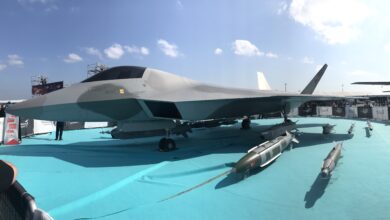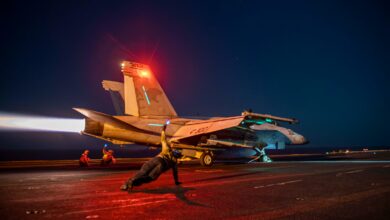
By Nicholas A. Heras
Center for a New American Security
The launch of the Turkish military’s (TSK) Operation Olive Branch, in coordination with Turkish-backed Syrian armed opposition groups, against the Kurdish-majority, northwestern Syrian-Turkish border region of Afrin, is ushering in another dangerous phase in Syria’s civil war. Turkey’s latest military campaign is the second phase of the effort that it began with the August 2016 Operation Euphrates Shield, which was also conducted by the TSK in coordination with Syrian rebel groups, captured approximately 2,000 square kilometers of northern Syria, and prevented the completion of a hundreds of kilometers long, contiguous zone of control for the U.S.-backed Syrian Democratic Forces (SDF) coalition along Turkey’s southern border with Syria.
The SDF is a multi-ethnic military alliance – with a large part of its strength being the People’s Protection Units (YPG) – an umbrella organization of local community-based militias, many of which are composed of ethnic Kurds, and a significant number of which are associated with the Democratic Union Party (PYD). The PYD, which is the dominant Syrian Kurdish political party, is in turn strongly influenced by the Kurdistan Workers Party (PKK), a Turkish Kurdish organization that is at war with the Turkish government and which is listed as a terrorist organization by the United States.
However, Operation Olive Branch seems to be about more than just Afrin, as the TSK and Syrian armed opposition campaign has been accompanied by increasingly intense rhetoric by Turkey’s leadership, including from President Recep Tayyip Erdogan, about seeking to carry war to other SDF controlled regions of northern and eastern Syria.
First and foremost in Turkey’s crosshairs is the region of Manbij, which is located in the western area of northwestern Syria’s Aleppo province, situated on the western bank of the Euphrates River. Manbij has been under the control of the American-backed SDF since August 2016. It was the SDF campaign on Manbij, and the looming prospect of it creating a contiguous zone of control for hundreds of kilometers along the Turkish border, that spurred on Turkey’s decision to launch Operation Euphrates Shield.
Manbij has been a long-running matter of dispute between the United States and Turkey, and the consequences of that dispute may soon lead to a wider war throughout northern Syria that could collapse the U.S.-led Coalition’s mission to bring stability after the Islamic State.
After the Obama administration decided to authorize the SDF to cross onto the western bank of the Euphrates and drive on Manbij in the summer of 2016, then-Vice President Joe Biden famously made a personal promise to the Turkish leadership that all the YPG would be required to withdraw from Manbij and back across to the eastern bank of the Euphrates River, once the city had been captured from the Islamic State.
It is Biden’s broken promise that is being used by the Turkish leadership as a blank check to underwrite harsh, threatening public statements against the U.S. forces and the SDF in Manbij, and potentially, a budding local insurgency against SDF control.
Over the last year, there has been a rising number of assassination attempts, some of them successful, against SDF officials and their local, mainly Arab allies; the announcement of a local Arab armed opposition group against the SDF, Harakat Qiyam; and frequent protests, mainly by local Arab tribes, against the SDF administration. These social, political, and security challenges – although for the time being manageable for the SDF – are easily exacerbated with greater Turkish attention and support, which seems forthcoming.
Yet, despite a potential war with Turkey, and the challenge of a local insurgency against the SDF, Manbij remains potentially too important for the U.S.-led Coalition to force the SDF to walk away from it. Manbij is key to securing the countryside around Raqqa, and as the Coalition works to rehabilitate the city and its surroundings and establish the foundation for sustainable stability there, it could be much better for the SDF, which the Coalition nurtured and fought besides, rather than any other Syrian actor, to hold Manbij.
For the SDF, control over Manbij provides a vital territory that brings it closer to Afrin, an important consideration for the Kurdish components of the SDF. Manbij also provides a territorial buffer against the SDF’s Turkish-backed, Syrian rebel enemies, even if Manbij is never completely incorporated under the direct rule of the SDF’s nascent government, the Democratic Federation of Northern Syria (DFNS).
Another, and perhaps the most powerful consideration is that the Manbij Military Council (MMC) was one of the most active, decorated and bloodied constituent, Arab-majority groups mobilized under the SDF banner. From fighting for the liberation of its hometown, to battling building-to-building in the mine-strewn streets of Raqqa, and supporting the campaign in the Middle Euphrates River Valley (MERV) in Deir Ezzor, the MMC has paid the blood price of its martyrs to be in at the death of the would-be Caliphate. For the Coalition to agree to relinquish the SDF’s control over Manbij would be a betrayal of some of America’s best partners in Syria, among the most honored of them, the MMC.
Yet, with all these realities arguing against an SDF withdrawal from Manbij, there remain lingering questions about this much sought after region that are worth further consideration by the United States.
The most important question of them all is to ask whether the Coalition has done enough to limit the influence of the the YPG in Manbij, which by extension means diminishing the power of the PYD in this region. And, if it has not, are there steps that can be taken to reduce the YPG and maintain the SDF in Manbij? This question rests at the heart of the acrimony over Manbij between the United States and Turkey.
The Manbij Local Council, which is charged with governing and administering this region, has generally sought to govern Manbij as if it were a core part of the DFNS, and not a periphery area beyond the western bank of the Euphrates. What this means in practical terms is that Manbij is being governed according to the social contract (or constitution) of the DFNS, which is heavily influenced by the PYD, which is seeking to implement Abdullah Ocalan’s vision of a democratic confederal system of governance.
With this system, rolled out by the PYD and its partners, comes certain cultural values, such as seeking to outlaw polygamy, which is unpopular among Manbij’s Arab tribes. Under SDF administration comes certain socio-political requirements, such as conscription and the presence of YPG veteran commanders to oversee the military administration of the region. And the effect of these efforts is to give the strong impression to some segments of the local population, especially Arabs, that Kurdish overlords are calling all the shots, and therefore, neither the Manbij Local Council, nor any of the SDF aligned groups including the MMC, are legitimate.
There is no quick and easy way for the U.S.-led Coalition to address this question because by backing the SDF – and simultaneously asking the SDF to govern in the wake of the Islamic State – the Coalition is also backing the implementation of the DFNS and the system of democratic confederal governance.
In effect, the U.S.-led Coalition wants the SDF to govern areas like Manbij in a manner that will conform to the wishes of the local population, to keep them from wishing back the return of the Islamic State, but in so doing the Coalition wants the SDF to be a self-running machine, without too much input required from the U.S.-led Coalition. But the challenge is that the SDF’s default setting is to run a government according to Ocalan’s vision, and to set the social norms according to the ideology of the PYD, which is problematic for many locals in Manbij and which can cause discord that can be utilized by a range of opponents – be they the Islamic State, the Assad government, or Turkey.
The second question is whether pressuring the withdrawal of the SDF from Manbij would actually make the DFNS more secure, and the Coalition’s stability mission more likely to succeed. In exchange for forcing the withdrawal of the SDF to the east bank of the Euphrates, the United States would put Turkey on notice that the entire SDF zone on the east side of the Euphrates would be protected by U.S. military power and that no Turkish-backed activities to undermine the SDF in that zone would be tolerated by the Americans.
Although Manbij is currently an important buffer for the DFNS, there is an argument that can be made that the DFNS would be even more secure if it withdrew from Manbij and consolidated all of its territory to the east of the Euphrates. Rather than be forced to provide security and govern a restive region that is coveted by Turkey, and which is susceptible to the instability that is likely to be caused by Turkish-backed tribal revolts and armed opposition insurgencies, the SDF could withdraw and focus on building effective security, governance, and administration in all the areas east of the Euphrates.
The withdrawal of the Coalition and the SDF from Manbij might be quite painful, and an accommodation would need to be made to protect the members of Manbij Local Council and the MMC from reprisals by Turkey or the Syrian actors that are backed by Turkey.
Manbij is a weathervane for the future stability of the U.S.-backed SDF zone in Syria. Even a U.S.-negotiated withdrawal by the SDF from Manbij (in effect atoning for Biden’s broken promise) might not be enough to assuage Turkey’s leaders. Emboldened by success in Manbij, Turkish efforts to destroy the SDF could intensify, rather than subside. Communally-mixed Syrian-Turkish border regions such as Tal Abyad and Ras al-Ayn, where Turkish influence operations could seek to undermine the SDF, could be follow-up targets.
Perhaps most important, if Manbij were to shift control from the SDF, even the nascent stability operations in Raqqa – the showroom model for the U.S. effort in Syria – could be threatened, as a weakened and distracted SDF might lose focus on its obligations in Raqqa. The collapse, or eviction by military force, of the SDF from Manbij would have dire consequences for the stability of the SDF, and by extension, the entire U.S. mission to build stability in the wake of the Islamic State in Syria.

Nicholas A. Heras is a Fellow at the Center for a New American Security (CNAS), working in the Middle East Security Program. He has over a decade experience working on Syria, both before and after the start of the Syrian Uprising in 2011. He has authored or co-authored numerous reports and analytical articles on topics concerning the Syrian civil war. He has also presented widely on the topic of the Syrian civil war and its impact on the greater Middle East region to multiple U.S. government and military agencies and non-government organizations. You can follow him on Twitter: @NicholasAHeras.
All views and opinions expressed in this article are those of the author, and do not necessarily reflect the opinions or positions of The Defense Post.
The Defense Post aims to publish a wide range of high-quality opinion and analysis from a diverse array of people – do you want to send us yours? Click here to submit an Op-Ed.











